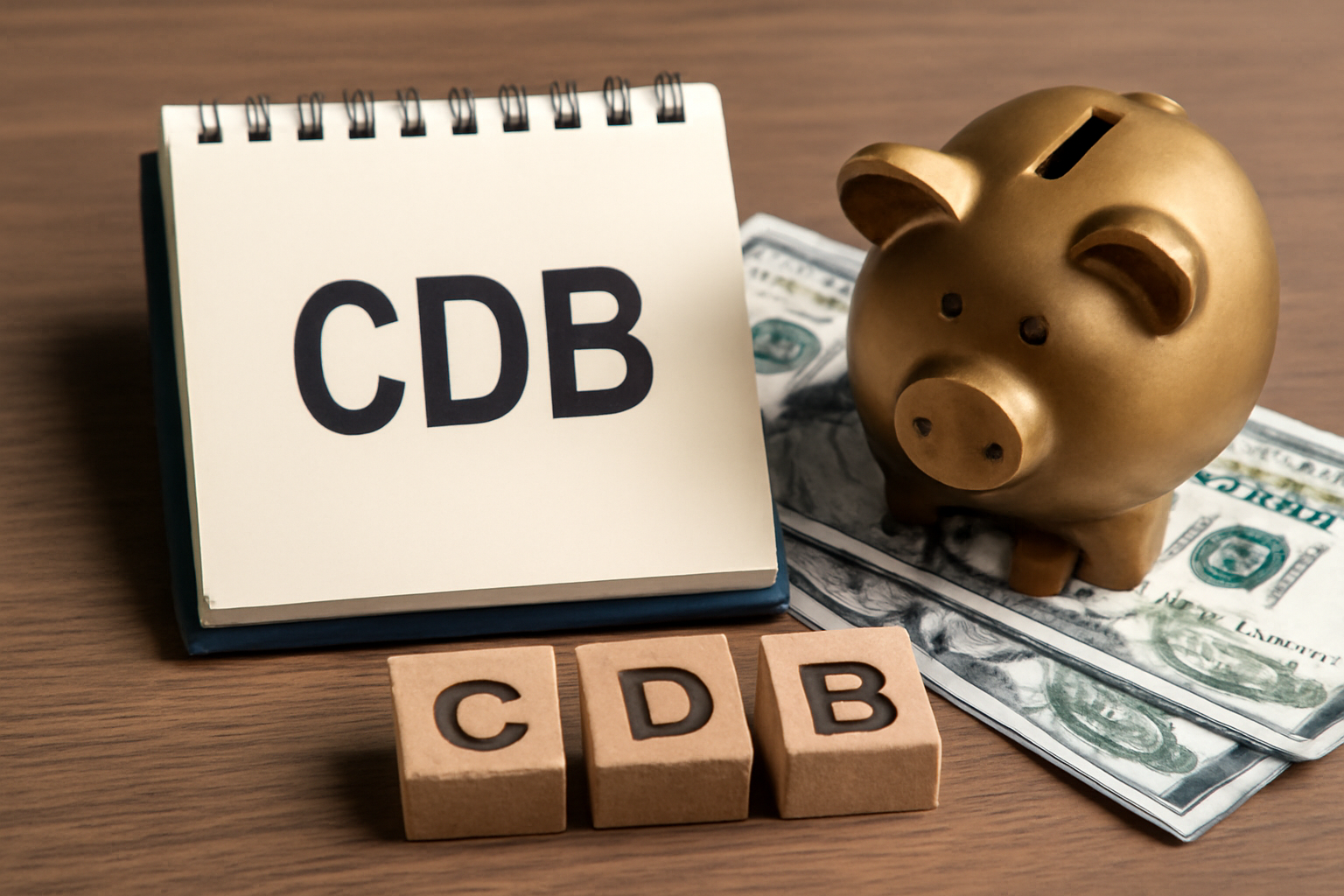When it comes to personal finance, investing can seem overwhelming, especially if you’re just starting out. However, finding simple and effective ways to grow your savings is crucial to securing your financial future. One such option that has become increasingly popular in Brazil and other countries is the Certificado de Depósito Bancário (CDB), or Bank Deposit Certificate.
In this article, we’ll explain what a CDB is, how it works, and why it could be a great option for beginner investors looking to safely grow their money.
What is a CDB?
A CDB is a type of fixed-income investment offered by banks. When you invest in a CDB, you’re essentially lending money to the bank, and in return, the bank agrees to pay you interest over a fixed period of time. The interest rate and the duration of the investment are predetermined, so you know exactly how much you’ll earn over time.
There are two main types of CDBs: pre-fixed and post-fixed.
- Pre-fixed CDBs: In this case, the interest rate is set at the time of investment, and you’ll know exactly how much you’ll earn by the end of the investment period.
- Post-fixed CDBs: These are linked to an index, such as the CDI (Interbank Deposit Certificate), which can vary. The interest rate is often quoted as a percentage above the CDI rate.
How Does a CDB Work?
When you invest in a CDB, you deposit your money with the bank for a specified period, usually ranging from a few months to several years. In return, the bank pays you interest over that time period. Once the investment reaches maturity, you get your initial deposit back, plus the interest earned.
For example, if you invest $1,000 in a CDB with a fixed interest rate of 8% per year, after one year, you’ll receive your initial $1,000 back plus $80 in interest, totaling $1,080.
Why is a CDB a Good Option for Beginners?
Here are a few reasons why a CDB can be a great choice for those just starting to invest:
1. Safety and Security
One of the biggest advantages of investing in CDBs is their low risk. Banks are typically regulated by government entities, which means that investments in CDBs are generally considered safe. Additionally, in many countries, CDBs are covered by a government guarantee up to a certain limit, which provides extra protection for your investment.
2. Predictable Returns
Unlike stocks or mutual funds, which can experience fluctuations, CDBs offer predictable returns. If you choose a pre-fixed CDB, you’ll know exactly how much you’ll earn, making it easier to plan and budget. For beginners, this predictability can be reassuring, as it reduces the uncertainty associated with more volatile investments.
3. Low Minimum Investment
Many banks offer CDBs with a low minimum investment, which makes it easier for beginners to start investing without needing a large amount of capital. Some CDBs have a minimum of just $100, so anyone can start with a small amount and gradually increase their investments over time.
4. Variety of Terms and Rates
CDBs come in a range of terms and interest rates, so you can choose one that fits your financial goals. Whether you’re looking for a short-term investment or a longer commitment, there are options available. Additionally, post-fixed CDBs that are linked to the CDI rate often offer higher returns than pre-fixed ones, but they come with slightly more risk due to the variable interest rates.
5. Liquidity Options
Although CDBs typically have a fixed term, many banks offer liquid CDBs, which allow you to withdraw your money before the investment matures. While early withdrawal might result in a lower interest rate, this flexibility can be useful for beginners who want to have access to their funds if needed.
Potential Risks to Consider
While CDBs are generally safe investments, there are a few risks to keep in mind:
- Default Risk: If the bank you’re investing in defaults, you may lose your investment. However, the likelihood of this happening is low, especially with larger, more established banks.
- Inflation Risk: If the inflation rate exceeds the return on your CDB, the real value of your investment could decrease. For example, if inflation is 10% and your CDB is offering 8%, you’re technically losing money in terms of purchasing power.
- Liquidity Risk: Although many CDBs offer liquidity, some require you to keep your money invested until the maturity date. If you need to access your funds early, you may have to accept lower returns or penalties.
How to Invest in a CDB
Investing in a CDB is relatively simple. Here’s a step-by-step guide to help you get started:
- Choose a Bank: Research various banks and financial institutions to find one that offers the best rates and terms for a CDB.
- Compare CDB Types: Decide whether a pre-fixed or post-fixed CDB is right for you based on your investment goals and risk tolerance.
- Make Your Deposit: Once you’ve selected a CDB, make your deposit and choose the term that best fits your needs.
- Track Your Investment: Keep an eye on the progress of your CDB and monitor interest rates, especially if you’ve invested in a post-fixed product.
- Withdraw When Mature: When the CDB reaches its maturity date, you can withdraw your initial investment and interest earned.
Conclusion
For beginners looking to start their investment journey, CDBs provide a safe, predictable, and accessible option. With a variety of terms, rates, and investment amounts, they offer flexibility to suit different financial goals. While there are some risks involved, such as inflation and default risk, the advantages make CDBs a popular choice for those seeking low-risk investments with consistent returns.
Before diving into any investment, it’s important to assess your financial goals, risk tolerance, and investment horizon. CDBs can be a great stepping stone for anyone looking to get started in the world of investing!
